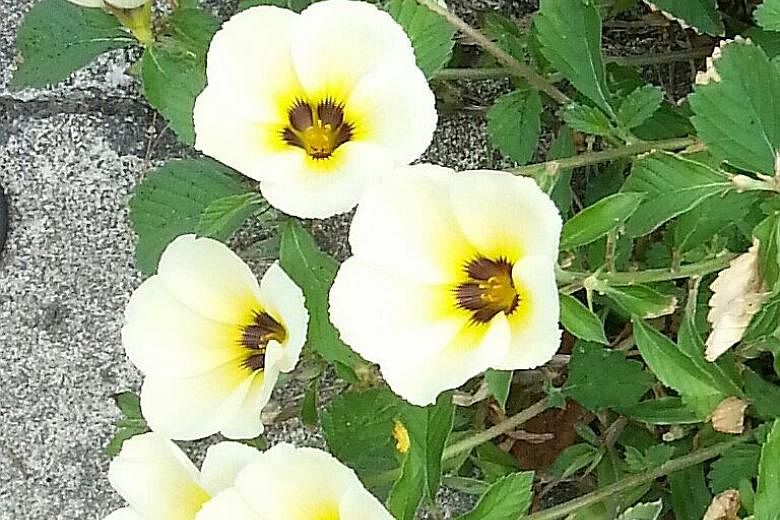White Alder once a popular landscape plant
I saw this plant by the roadside. The flowers bloom only in the morning and last for only a few days. What is its name? I have not seen it anywhere else in Singapore before.
Koh Ang Moi
It is known by a range of common names, such as White Alder, Yellow Alder and Sage Rose. Its botanical name is Turnera subulata and it belongs to the passion flower family (Passifloraceae).
It used to be a popular landscape plant, but has fallen out of favour over time, likely due to its shortlived flowers.
Plants tend to get leggy over time - that is, the lower leaves of older plants tend to be lost, leaving bare stems, which can be quite unsightly. Occasional pruning can keep the plant bushy and promote new shoots which will keep the plant looking good for a much longer time.
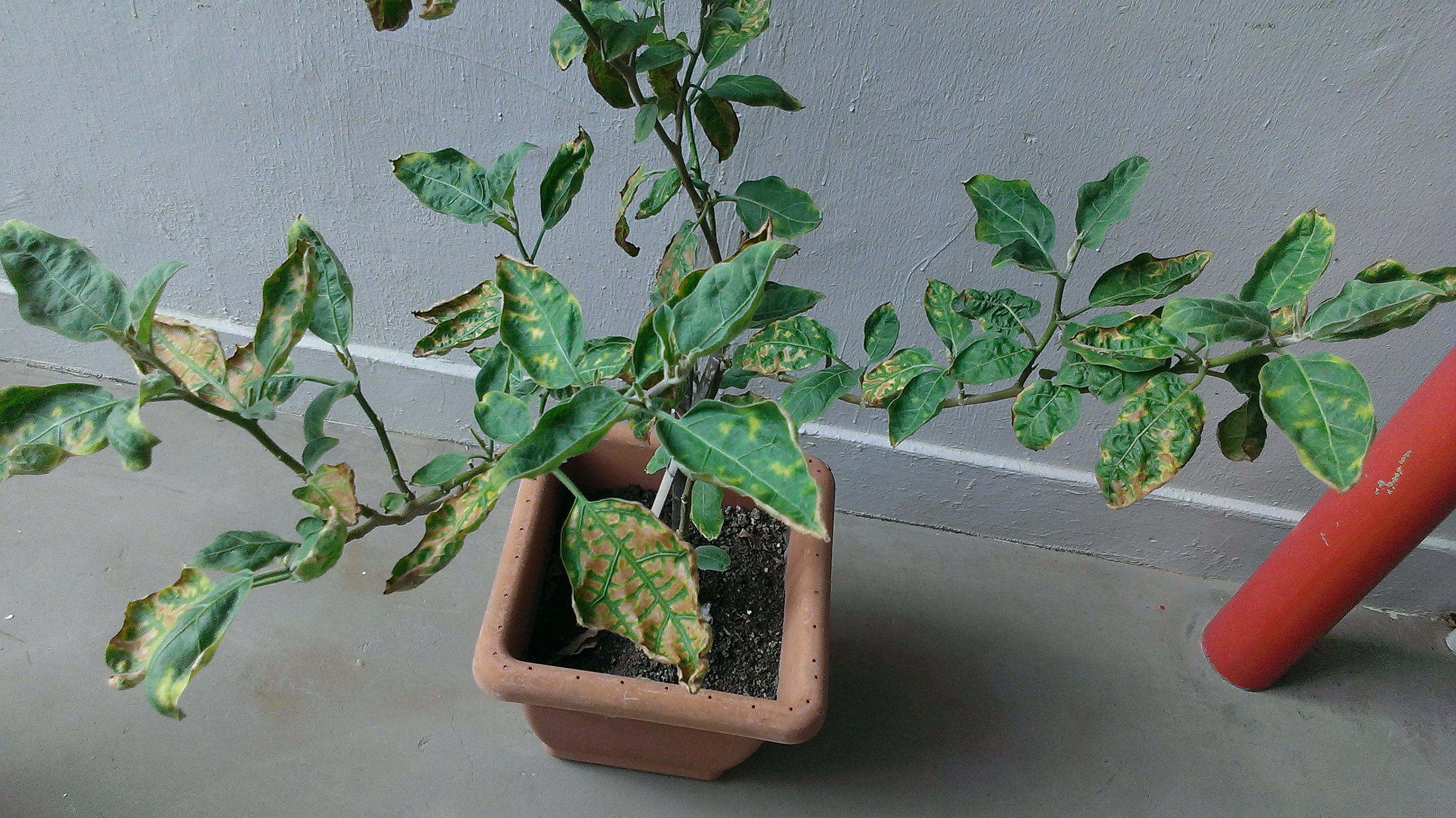
Puckered leaves of brinjal indicate lack of nutrients
I grow brinjal in medium and big pots, with lots of sunlight, and I water them twice daily. Lots of flowers bloom but, after a few days, they dry up. The leaves start turning brown too. Why does this happen?
Low Siew Geok
From the picture, it appears that you are growing your brinjal in a high-rise environment. Such an environment can be dry due to low air humidity. This affects fruit set.
You may want to increase the humidity of the air around the plants by growing other plants around them.
When putting plants around the brinjal plant, ensure that you do not crowd it or reduce the sunlight it receives. Brinjal plants require direct sunlight to grow well.
Also, protect it from excessive wind. Misting by hand is not practical, as it only temporarily increases moisture in the air.
You may want to incorporate organic matter such as compost into the soil.
Apply a layer on the soil surface as mulch to help reduce the rate of evaporation and keep the roots moist and cool. The lack of moisture can cause older leaves to turn brown and fall off.
The puckered appearance of the leaves may be due to the lack of nutrients. This can be remedied with a regular application of a water-soluble fertiliser, such as Phostrogen.
Check the undersides of the leaves for small sucking pests. Spider mites, for example, too small to be spotted by the naked eye, thrive in dry environments.
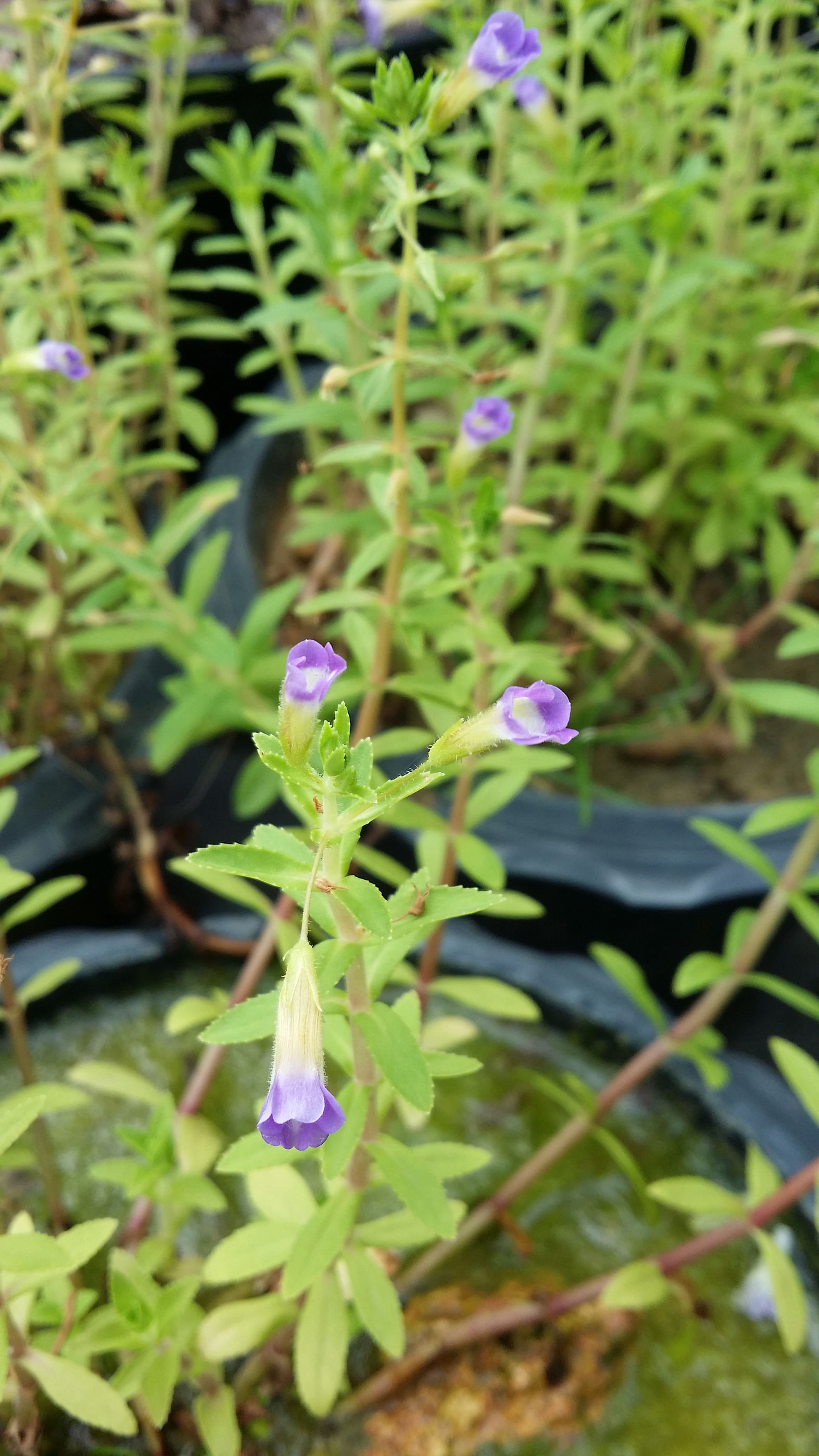
Tip: Uncommon Rice Paddy Herb is an edible plant
The Rice Paddy Herb (botanical name - Limnophila aromatica) is a plant that is not commonly available. It is an edible plant with leaves and stems that are aromatic. The scent is reminiscent of cumin and lemon, and the plant is used in Thai and Vietnamese cuisine.
Aquarium shops occasionally sell it as a plant for growing in fish tanks. Fresh cuttings are sometimes sold in Thai supermarkets in Singapore. The plant naturally grows in swampy or boggy soil, so cuttings should preferably be rooted in some soil at the bottom of a container with water.
Over time, the cuttings will root and stems will slowly emerge from the water. Only stems that grow out of water will flower. The plant grows best in a sunny location.
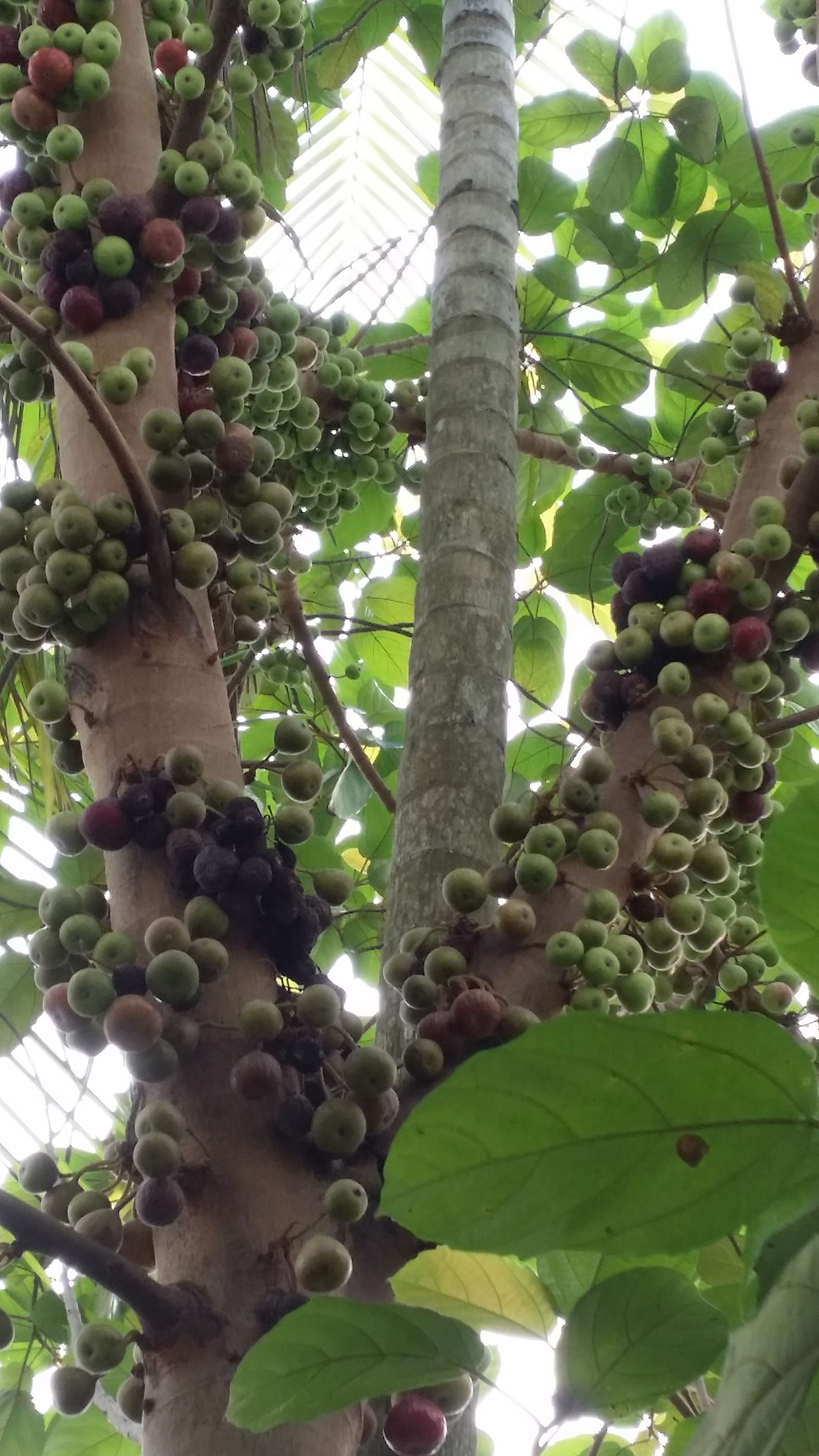
Fruit of Yellow Stem Fig is edible and has medicinal uses
This tree in my garden produces fruit that resemble figs. I have seen bats, squirrels and even a cat eating the fruit. What is the name of the tree? Can humans eat the fruit?
Martha Ng
From what I can make out of its leaves and fruit in the picture, the tree is likely to be a Yellow Stem Fig (Ficus fistulosa), a member of the Fig family (Moraceae).
This fig tree is a native species of Singapore and its fruit provides food for wildlife, such as the bats you mentioned.
People have documented medicinal uses for the fruit, which are cooked before they are eaten.
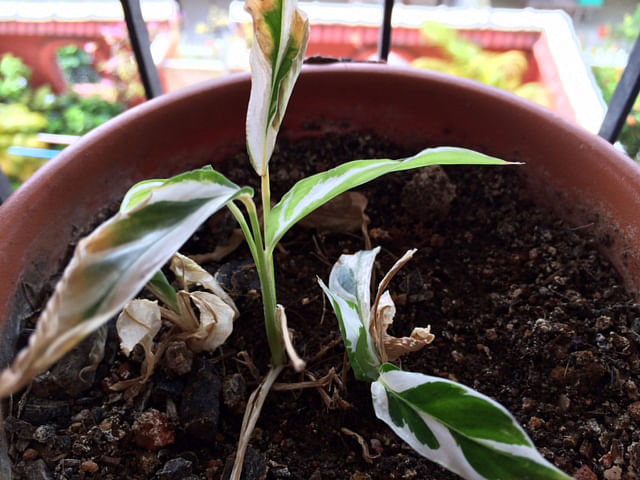
Prayer plants need filtered sunlight
I bought some plants from the nursery, but their leaves dried up after a few months. I repotted the plants using soil and compost mixture. One pot, placed on the window sill, dried up quickly. Another, in a shady spot in the garden, fared better, although it is not flourishing. The young leaves lasted only a week before they dried up. Why does this happen?
TangNee Ang
The plant is a cultivar of the prayer plant. It is likely the Calathea cultivar named Fusion White, which features variegated marbled white and green colours on the upper side of leaves and a light purple on the underside.
In general, prayer plants do not do well indoors due to the low humidity. Being located near the window can worsen the situation as constant wind can dry out the plant.
The large area of white on its leaves are especially prone to injury from intense sunlight or dry conditions, or both.
Prayer plants tend to fare better as outdoor garden plants. Plant them among other foliage plants in a sheltered location protected from wind. They prefer a place with filtered sunlight - intense direct sunlight will burn the leaves.
Soil should be moist instead of soggy. At the same time, do not let the soil dry out totally as this can cause the leaves to curl up.
•Answers by Dr Wilson Wong, a certified practising horticulturist and founder of Green Culture Singapore (www.greenculturesg.com). He is also an NParks-certified park manager.
•Got a gardening query?
E-mail it with clear, high-resolution pictures, if any, and your full name to stlife@sph.com.sg
